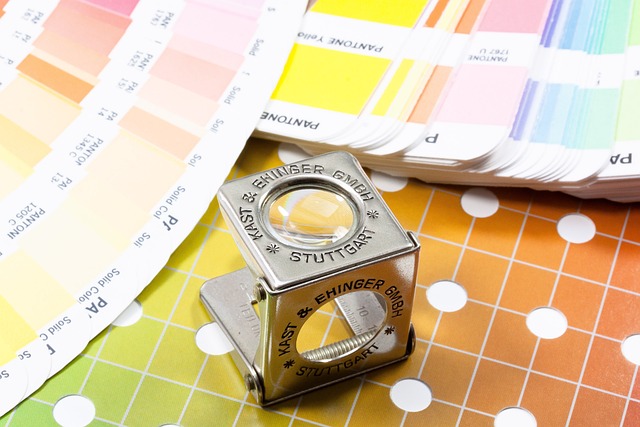Do you have a great story to tell but can’t quite find the right way to convey the mood? Do your descriptions feel too formal? Does your slavish adherence to grammar feel labored and stiff? Indeed, finding the right tone conveys feelings as much as story.
So, when developing the next chapter of your creative writing project, think about whether you want a formal or optimistic tone. Consider how the overall tone might affect the reader’s engagement, expressing an attitude that compels them to read on.
This article is about the different tones you might employ to help keep your reader intrigued or spark their curiosity through tone and setting.
Ready? Let’s go.
How Do You Identify Tone In Writing?
When we read text – whether that’s a novel or a pamphlet, or the back of a shampoo bottle – we instantly engage with the tone, even if we’re unaware of it.
Examples of tone
- The shampoo bottle probably uses words and phrases that feel sparky and fresh, inducing a feeling of cleanliness.
- A pamphlet convincing you to vote for your local council member probably uses language that feels serious and straight-talking, hopefully making them seem trustworthy and knowledgeable.
- A novel will employ a range of tones from tension and suspense to lighthearted and optimistic.
At the heart of it, whatever text you’re engaging with aims to make you FEEL something. So, if the writer hits the right tone, the reader feels excited, scared, interested, or at ease.
How Many Tones Are There In Writing?
It’s a tricky question because there are as many tones as there are emotions. But that’s a bit of a cop-out, isn’t it?
So, the most commonly used tones in writing are:
- Formal
- Informal
- Optimistic
- Curious
- Worried
- Friendly
- Assertive
- Tense
Let’s look at each of these in a little more detail.
Formal tone
You often come across formal tone in academic writing or professional writing – the type of letter you receive from a doctor or a lawyer.
The formal writing tone is direct, thorough, and precise. However, it’s also respectful.
Formal writing tends to use full words – I am rather than I’m, You are rather than you’re.
Formal writing feels factual and sticks to the traditional rules and conventions of grammar, often erring towards the academic context.
Some examples of formal tone:
- We have considered your application and are not able to provide comments at this time.
- Dear Sir/Madam
- Please may I have one more of your delicious macaroons?
- You are one of the most friendly people I can recall.
The sentence structure is formal and grammatically correct. While most of us wouldn’t necessarily speak in this way, a verbally formal tone could feel authoritative or intimidating, or even aggressive.
Characters in fiction who speak in a formal tone often do so because they are exerting their authority.
Informal tone
The informal tone is conversational and expressive. It includes colloquialisms and regional variations of words. For example, in the UK, a burger bun could be called a:
- Bap
- Cob
- Roll
- Bun
- Teacake
- Barm cake
The informal tone sounds like the voice you might use to speak to your bestie (there: I’m being informal by using the term “bestie” rather than “best friend”).
The sentence structure is less formal, using a choppier rhythm. Or it could be chatty and meandering.
You’ll find many contractions in this writing tone – you’re, I’m, won’t – that type of thing. Perhaps you’ve noticed that this article is written an informal, conversational tone to make you feel at ease.
Examples of informal tone in writing:
- Ayup duck, how’s your mam?
- Yo! Whasssupp?!!!
- Andy shrugged as he tossed the rejection letter in the trash.
We often use informal tones for character voices because it feels more natural. But you might also use a conversational tone in an email, whereas you’d be more likely to use a formal style in an old-skool letter.
Optimistic tone
You often see an optimistic tone used in advertising.
- Just do it.
- Maybe she’s born with it.
- You got it.
- I’m lovin’ it.
Optimistic text conveys hope and a positive outlook. Even when talking about life’s challenges, you can convey optimism through your tone in writing.
Curious tone
A curious tone excites the reader’s imagination – tempting your reader with mystery or compelling details.
Use a curious tone where you hope to intrigue – commonly used on the back copy of a novel – the words will try to whet the reader’s appetite for something juicy to get their teeth into.
Examples of curious tone in writing:
- There was a thud. Andrew crept into the hallway to find a box lying on the floor.
- I was wondering whether you might help.
- Why are you looking at me like that?
This tone aims to draw the reader in with mystery. As novelists, we pose questions in our writing that, hopefully, keep our readers guessing.
Worried tone
A worried tone incites concern and fear in the reader. It conveys anxiousness and fear of the unknown.
You’ll find worried tone in political rhetoric – often as a device to scare the audience into making a decision they wouldn’t normally choose.
Examples of worried style:
- He took a slow, deep breath as his shakey hand tentatively reached for the envelope, like it could jump up and bite him.
- The health system is failing. We need to do something to stop people from dying.
- Her eyes were glued to the window as she rocked back and forth, desperate to catch her breath.
Worry is often expressed through voice pitch; it can convey anger and use certain words to describe the writer’s attitude, using word choices that put the reader ill at ease.
Friendly tone
A friendly tone is similar to the informal style in that it feels unthreatening and reassuring. We trust a friendly tone, while we’re inherently suspicious of overly formal language.
The friendly tone feels optimistic, and uses exclamation points to express enthusiasm and warmth.
Examples of friendly tone:
- Andy willed her with a look of encouragement. “You can do this!”
- Wow! I love your new jacket!
- Happy birthday! Have a great one!
People tend to write in a friendly tone on social media (unless they’re specifically looking for an argument!).
Assertive tone
Assertiveness oozes authority, confidence, and polite determination.
People often misunderstand the meaning of assertiveness – they think it means being forceful and always getting what you want, regardless of the outcome for others. But that’s just rude and arrogant – it’s not assertive.
Assertiveness is fighting your corner without being rude or aggressive. It’s standing up for yourself or others while remaining polite and unconfrontational. Assertive people can get their point across while avoiding upsetting others (or themselves).
Examples of assertive tone:
- I’m listening, and I respect your opinion.
- Could you consider another way of doing that?
- Andy walked to the front of the crowd with conviction – this was his moment.
You’ll find an assertive tone used in therapeutic settings and education. A great teacher is assertive.
Tense tone
We find thrillers brimming with tension, and the author purposely uses this tone to excite the reader and keep them on their toes.
It’s similar to other tones, such as curious, but tension is all about carefully chosen words that build anticipation.
You can build tension through a facial expression where the word choice from the character belies what they’re truly feeling.
Examples of tense tone:
- Knock knock. He froze. Sunk behind the sofa. Waited.
- The kind-hearted widow shakily slid the chain onto the door and tentatively opened it.
- BANG! The glass shattered and scattered shards of razor-sharp filings across the kitchen floor.
Is Suspense a Mood or Tone?
People often confuse mood with tone. And while they’re similar, there’s an important distinction.
An author chooses the right tone to convey suspense, maybe by writing aggressively or using figurative language that incites different moods in the reader.
The writing tells the reader to feel anticipation or dread, or suspense. The writer’s voice projects a sense of emotional response they hope the reader will feel.
Our Words Determine Our Writing Style
A writer may want to make people laugh; they might use word choices to make the reader enjoy the unexpected or feel more emotion.
They may use a word that emphasizes facts and attitude or convey tone that wrongfoots the reader.
They might use an encouraging tone, then swiftly juxtapose it with a surprised or entertaining style. The writer conveys the tone, and the reader perceives the mood through a sense of atmosphere.
Harry Wallett is the Founder and Managing Director of Relay Publishing. Combining his entrepreneurial background with a love of great stories, Harry founded Relay in 2013 as a fresh way to create books and for writers to earn a living from their work. Since then, Relay has sold 3+ million copies and worked with 100s of writers on bestselling titles such as Defending Innocence, The Alveria Dragon Akademy Series and Rancher’s Family Christmas. Harry oversees the creative direction of the company, and works to develop a supportive collaborative environment for the Relay team to thrive within in order to fulfill our mission to create unputdownable books.
Relay Publishing Wants You
If you think you have what it takes to become a brilliant writer, editor, or storyliner, Relay Publishing has a range of exciting opportunities.
Find out more about us, and get in touch. We can’t wait to hear from you!




